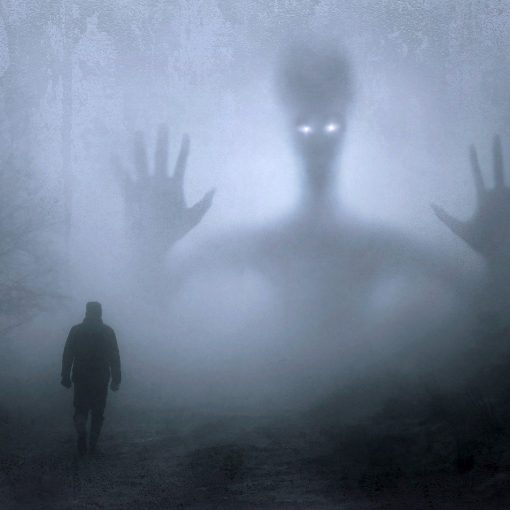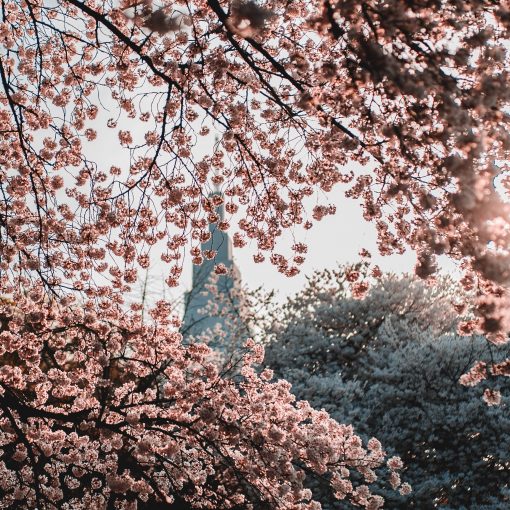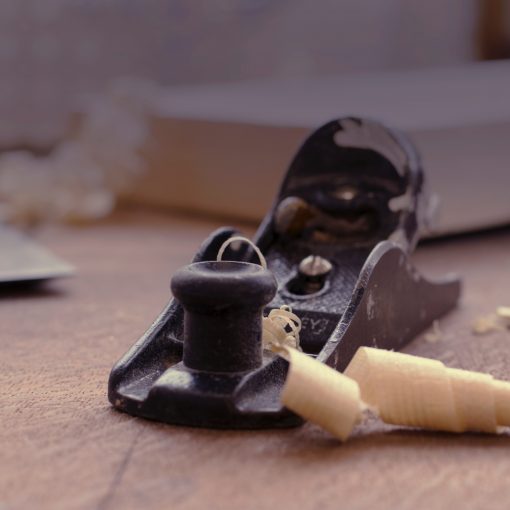The light shines in the darkness, and the darkness has not overcome it. -John 1:5
As I referenced in my previous blog post in this series, I’ve been gradually working on a new setting for some theoretical future campaign. Because I’m still waiting on some rules resources to actually be published and reach me (specifically Xanathar’s Guide to Everything and the Hellscapes books) I’m still on high-level themes and concepts. (One of the nice things about just doing the setting as something to use rather than something to sell is that I don’t have to do much in the way of actual game design.) There is plenty of that stuff to work out, however!
For this post I’m going to focus on the moral universe of the game.
A huge underpinning of the entire setting in an ongoing battle of Good vs. Evil (both capitalized on purpose). When one of your touchstones is heavy metal, there’s not a tremendous amount of benefit in shooting for subtlety, so I’m not going to bother. Instead, I’m going to focus on a set of contrasting principles that paint the moral texture of the setting and give some early thoughts on how I’ll depict those in the game. In kind of an inversion of D&D 4e’s “points of light” idea, I’m using what I’m tentatively calling “dark blots” (other names in considerations: spots of darkness, pits of darkness) where there are areas controlled by various evil forces that have carved out some territory for themselves. An acknowledged influence here is the Dark Lords of Ravenloft and their domains. A certain Ravenloft game I’ve referenced a few times on the podcast is definitely being farmed for material here.
Oppression and Peace
As I referenced in the last post in the series, one of the big things that Christianity and a lot of traditional heavy metal share in common is concern for the oppressed, so one of the big themes in the setting is going to be oppression and how to deal with it. One of the things Evil wants to do in the setting is create misery and suffering through grinding and suffocating want and violence – rather than simply wiping out a population, most of the evil powers in the setting would rather enslave it, either explicitly through chains and cruel slave drivers or figuratively through things like a company store that is deliberately set up to create debt slavery. The oppression and privation create desperation, which spawns cruelty. In a world that’s designed to crush you, people often opt for an “every man for himself” outlook, viciously protecting what little they have like a caged animal. But unlike the real world where these systems often come about via carelessness, unforeseen consequences, or through depraved indifference, in this setting these structures of oppression are almost always carefully engineered and meticulously deliberate.
Because the setting has some quasi-modern technology, this allows for factories and mines with big, scary machines and so on to factor into the visuals, and it also allows for the idea of large, concentrated populations laboring away for some overlord and that overlord’s minions. Partially bombed-out high-rise apartment buildings, shantytowns, and cyberpunk back alleys all strongly influence the urban aesthetic. By contrast, the forces of evil themselves enjoy overflowing, gilded opulence. Think of the palaces of Saddam Hussein in Iraq – ridiculous, bizarre luxury contrasted against the bleak, hardscrabble existence of the masses seething below them, ground down and whipped into line. This dichotomy is rubbed in the faces of the oppressed and it is often hinted or outright said that the difference is their own fault, and if they’d just get on board, the luxury could be theirs too. (This isn’t a complete lie, but as I’ll get to in a later post, that deal comes with some hefty strings.) I refer to these locations as the Grim Cities.
By contrast, I want good to be exemplified by places that are more like Stardew Valley. Things aren’t completely perfect, but there is a sense of security, peace, and perspective. People may not live in opulent luxury, but they have enough to feel safe and secure, and when hard times fall on someone in their community, they band together to support them and help. Religion is uncorrupted and a force for organized charity, therapy, and purpose, and people react to refugees from the city in much the way South Koreans react to North Koreans who escape to the South or West Germans reacted to East Germans who escape to the West during the Berlin Wall era – compassion and help to rebuilt (or just build) their lives. Those who have been hurt can heal. Those who have done hurt can atone. Those who are weary can rest. Those who are restless can work to do some good in the world.
And perhaps most importantly from a gaming perspective, those who want to go challenge Evil on its home turf have a safe place to fall back to so they can regroup.
In order for that to work, the better places in the world need to have some civilization too, but not as much as you might think. The Grim Cities turn a lot of the productivity they generate back in on themselves, expending a lot of resources crushing their own population, dumping yet more opulence on their ruling class, and and so on. This means that while the armies of conquest they send out are certainly nasty and nothing to be trifled with, this isn’t Reign of Steel or Midnight where the good guys have no chance either.
Still, that leaves the problem as to what this looks like. One example that springs to mind is the monarchy of Norway. My wife recently stumbled across some material about King Haakon VII of Norway, and I think the modern Norwegian monarchy may be a better go-to example than even the King Arthur legends of what a benevolent human monarchy looks like. There’s also a lot to be said for nature as a contrast to the concrete and steel of the cities. Natural beauty is great – but it should also be dramatic to fit with the heavy metal aesthetic – craggy foothills, breathtaking natural monuments, ancient forests with massive sequoia-like trees – all of these convey a sense of grandeur and awe without being sinister.
As always, I’d love to hear any thoughts you have!
Video Playlist:
Disturbed: Land of Confusion: Definitely watch the music video on this one – very much in the theme of oppression and fighting it.
This week’s photo is from Tom Barrett on Unsplash





7 thoughts on “Setting Design Report, Part 2: Moral Universe, Part 1”
A thought about alignment – for all of my homebrew settings, I alter the axes of alignment from the D&D standard, and I think this might be helpful in a setting like what you’re describing as well. It’s too easy to align yourself with Good or Evil in a world that is already divided up. What are the moral axes that arise out of your setting and how people live in it? This also helps define what you mean when you say Good, which is very helpful in D&D, where a player might have their Paladin commit genocide against a group from a race that is described as evil in the Monster Manual, and then not understand why that wasn’t a “Lawful Good” thing to do.
Instead of good and evil, maybe generosity and selfishness. Either you value sharing, or you are out for yourself – I got those two themes from what you wrote above.
On the law and chaos axis, maybe (from the glimpse in your post) function and beauty. So, given those changes, for example:
LG becomes valuing generosity and function – something like a communist organizer, maybe; CG becomes valuing generosity and beauty, like a hippie who doesn’t believe in property but loves art.
I dunno, just a thought. It could be too simple, or even redundant, to have two strong poles that the players can just align themselves with without thinking much about how they are aligned.
It does sound like a cool setting, though :)
Well, credit where credit is due, because while I’m not going to use the exact system you suggested, you certainly got the ball rolling for me!
What I think I’m going to do about the good vs. evil axis is tying that component of alignment to ratings on the 7 deadlysins/heavenly virtues.
Each virtue/sin will have a rating of Saint, Seeker, Accepter, Indulger, or Monster. Saint represents a person who basically never struggles with that particular sin and always displays the corresponding virtue – they are someone who just plain isn’t greedy, for example. A Seeker is someone who does a pretty good job keeping that particular impulse in check, but may struggle with it, an accepter is someone who has decided that this is a part of their nature, but will try to avoid hurting people and doesn’t obsess about it, or alternately just isn’t particularly inclined to show the virtue, but maybe also doesn’t show the sin (someone who doesn’t have much of a temper but also may hold some old grudges for Wrath/Mercy for example). An Indulger is someone who indulges in that particular vice and doesn’t care, and a monster is someone who takes the vice and pushes it into something grotesque and actively harmful and often in a way that’s violating somehow – cannibalism for gluttony for example.
Saint and Monster ratings are mutually-exclusive – a character can only have one type or the other, but can otherwise have a mix. Figuring out where the exact thresholds for good, neutral and evil will lie with respect to those ratings is something I haven’t entirely worked out yet and would welcome feedback on. I’m tempted to use a point and multiplier system based on the heirarchy; low ratings in Pride/Humility or Envy/Kindness may override a character who is temperate and chaste, still allowing them to have an evil alignment – this would make for workable Judge Frolo types of characters, for example.
I like your idea for the law/chaos axis, but I think I’d also like it to have a bit more granularity. In any case, glad you’re enjoying the posts, and I really appreciate the feedback!
Brainstorming some ideas for the law/chaos axis’s respective traits (I think I’ll call these “priorities”). I also think I’ll call good vs. evil “Morality” and law vs. chaos “personality.”
Duty vs Freedom
Efficiency vs Artistry (I just renamed your function vs. beauty idea here)
[placeholder term for doing things properly] vs Expediency
Satisfaction vs Excitement
Tradition vs Progress
This will definitely be the basis for the next post in this series!
Awesome! Only getting to these like a week late, but still, glad to jump-start what sounds like a cool system. Reading through the next post in this series presently…
The place that your setting brought immediately to mind was the world of ReBoot: a good place, with centres of opulent oppressors and downtrodden and enslaved commoners.
I’m only passingly familiar with reboot, but it sounds like I should fix that one of these days.
This makes me think of Tolkein’s views of progress & industrialization vs. the simple, country life, i.e. Sauron & Saruman vs the Shire.
I approve. If the Shire has wifi, it would be perfect.